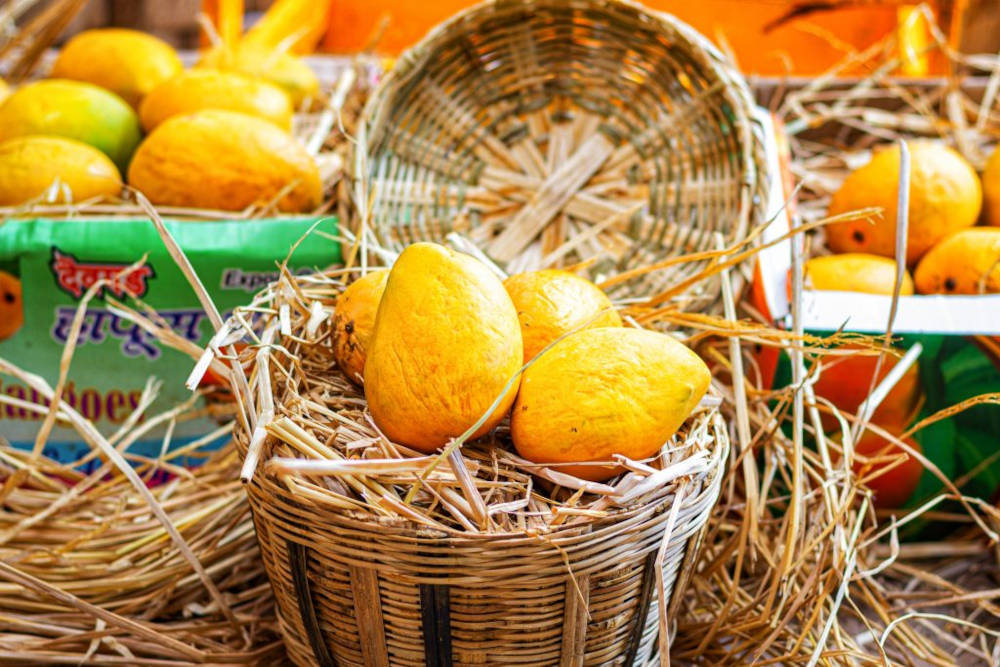[photograph by SvapnilRaut, via pixahive]
Good morning,
It’s April and the mango season has started.
India has many varieties of mango—1,500! though an average city-dweller will come across maybe 50 varieties. The fruit is grown all over the country. And different varieties become ready right up till August.
We are spoilt for choice indeed. And that choice itself can be a challenge. How do you select the best?
And how to best enjoy them? Slice them up, eat the pulp directly from the fruit of course, but what more can you do with it?
S Sivakumar, who is group head - IT and agri business at ITC, and master chef Sanjeev Kapoor have advice on what to look for in a mango, which varieties are at their best in which months, how to extend the season by keeping them longer, and simple but scrumptious recipes to indulge your love for mangoes. (And if you want to explore the history of mangoes in India, here’s a superb article from TheBetterIndia.)
Buying the best mangoes

By S Sivakumar (Group Head – Agri & IT Businesses, ITC)
S Sivakumar has the inside track on buying the best mangoes because of his professional role in the agri sector—he knows many orchard owners and also has four mango trees, of four different varieties, at home. “Every year I get to taste different kinds of mangoes in different parts of the country as my work involved a lot of travelling—before the pandemic, of course,” he says.
1. How to find an authentic source to buy from
Covid has disrupted the flow of mangoes in the usual channels from the farmer to a retailer. In any case, consumers also prefer non-physical ways of buying these days.
But there are two difficulties with buying mangoes—and any fruit, in fact—online. First, the variety and origin authenticity, which has taste implications. And second, safety, because a lot of people still use carbide in the ripening process, which is carcinogenic.
So, the first thing you need to check is whether you can trust the source. If you or your friends have first-hand experience of buying from them in the past, that’s your best guide. If not, then look for the kind of information they make available. Are there pictures of orchards? Can you talk to the farmer yourself?
Otherwise, try a small sample first, before you order more.
2. See and buy: How to check for quality
Here’s how you check if the mangoes you bought (or are buying from a physical store or a roadside vendor) are good.
Typically, most people look at the colour first. But this is the last thing you should look at. A ripe Mango can be bright yellow, or green or pink or orange or red depending on the variety.
Instead, the most important characteristics are firmness and aroma. It should be soft, but not mushy; the skin should not be shrivelled or wrinkled. And it should smell fruity and pleasant. Smell the fruit near the stem to get an ‘inside’ perspective.
3. Extend your mango season
Also consider whether you will eat the mangoes straightaway or slowly over the course of a week or 10 days. Buy slightly less ripe mangoes if you’ll eat them later.
One simple test for ripeness: in a batch of same size mangoes that look similar in colour etc, the slightly more ripe fruit will feel heavier.
And once you buy relatively unripe mangoes, keep them at room temperature at home for them to ripen naturally. Do not refrigerate before they are fully ripe. Once ready, refrigerate to slow the ripening process. They will keep for a few more days.
To keep them for longer still, peel, cut into cubes, and store in an airtight container in the fridge. Or you can even freeze the cut fruit for up to a few months.
Of course, if a mango looks like it is rotting (bruised or discoloured skin, sour smell) remove it from the basket and check if it is discoloured inside too. If yes, throw it away. (This is a risk of buying from a wrong source and getting overripe fruit shipped to you.). If not, use the pulp in smoothies.
4. Mango varieties by season
You can buy different varieties of mangoes from April to August. But different varieties are best at certain times in this five-month season. (Keep in mind that if you are buying very early in the season, either they are not completely ready—they may be somewhat sour—or they may have been artificially ripened.)
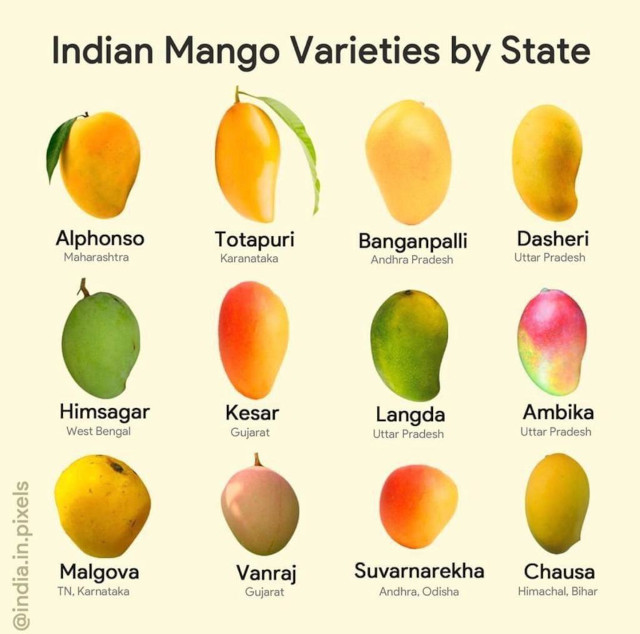
[Via reddit]
- April to June: Alphonso, which grows in western and southern India; Banganapalli (also called Safeda or Benishan); Suvarnarekha or Sidhura.
- May to June: Himsagar, Kesar, Dasheri, Pairi.
- June to August: Langda, Chausa (or Chaunsa), Neelam. These taste best after the early rains.
Each of these varieties have their own inner chemical processes to change from sour, raw mango, to fruity sweetness. All of them, of course, depend on heat—that’s why it’s a summer fruit. But some of them really get completely mature after the early rains.
So, late May – early June is really when almost all of them are available. But this is a broad window of April to August.
5. Is there a way to know if carbide and chemicals were used to ripen?
It’s difficult to know, if the chemical powder is washed off the fruit before it is retailed. But after you’ve bought them you can sometimes tell that the smell and taste is different—you can sometimes smell and taste the chemical. And sometimes you have whitish patches inside the fruit that’s been artificially ripened. That’s why the trusted source is so important. A lighter fruit also is an indicator that it may have been artificially ripened.
I suggest you buy from multiple sources around this five-months season.
6. How much are you likely to pay this season?
The prices fluctuate quite a bit from year to year. Because some mango varieties are what are called ‘alternate-bearing’. That means the yield is less every alternate year. This year, the yield is 25% more than the previous one. And next year, inevitably, the yield will be lower.
Then there are some regular bearing varieties, and some shy bearing ones where the yield falls only marginally. The alternate bearing varieties are largely the North Indian varieties. The South Indian varieties—Banganapalli, Totapuri, Suvrnarekha—are regular bearing. And Alphonso is shy bearing—especially the ones grown on the west coast.
If you keep track, you'll become familiar with which year the yield is expected to be more. Of course, the last-minute weather changes might impact the yield.
Generally speaking, 2021 is a better yielding year. So, you can expect lower than typical average prices. The prices tend to be a bit higher at the beginning and at the end of the season, but generally speaking they won’t be too different from last year even though that was a low-bearing year. Because prices dropped last year due to the lockdown and all the ensuing logistics challenges.
Make the most of the season

By Sanjeev Kapoor, master chef, TV show host, and author of bestselling cookbooks
For me, one of the only things that make the sweltering summer heat bearable is the fact that it coincides with the mango season and I am sure this is a common notion for many of you. Juicy, pulpy, refreshing, flavourful and available in several varieties, eating mangoes is almost therapeutic! I have always been very keen about the wonderfulness of this particular fruit and the love affair is constant since I was a child.
Aam ka achar is more like a ritual at my home, since childhood and we enjoy it all year long. Other pickles might come and go but this one remains constant. You can check out Alyona’s special version of Andhra-style Avakkai (aam ka achaar) here.
I also remember my mother keeping a glass of chilled aam panna ready for me as I returned home from school during summers. After a tiring day and the scorching summer heat, every sip of that glass was so blissful that the moments are still alive in my memory like it was just yesterday. And, some days, I still crave to go back to those days. Although, since then and now, there has not been a single year when I have not utterly enjoyed the season of mangoes.
Many people are under the impression that eating mangoes is not a great choice for their health. But, let me tell you, mangoes are just like any other food; they’re healthy for you but only if you enjoy it in moderation. So, let me share some ‘not so aam (ordinary)’ benefits of this amazing fruit. First off, mangoes contain an antioxidant, named zeaxanthin, which is said to protect our eyes. Like many other fruits, it is also loaded with vitamin C, beta-carotene and vitamin A. It’s also high in fibre and can help control cholesterol levels in the body.
You should know that mangoes taste great in any avatar and there are so many unique ways to experiment with this much-loved fruit. Let me share my top 6 mango recipes to make the most of this season.
1. Mango Achaar Cooler
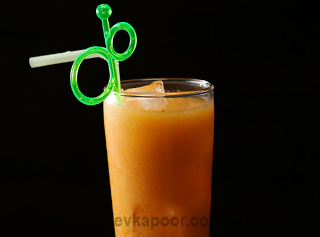
This recipe is indeed ‘sugar and spice and everything nice’. The sweetness of mango is complemented and spruced up with a kick from a good ol’ aam ka achar and a dash of Tabasco sauce. This sweet and spicy mocktail is perfect to serve to your guests.
2. Mango Coriander Chicken

When you think you cannot put mangoes in everything, it won’t taste good, this recipe comes right in! Chicken breast marinated in a spice mix made of sweet mangoes and fiery spices, seared in a grill pan and finished off in the oven till perfectly succulent. (See the recipe)
3. Mango Phirni
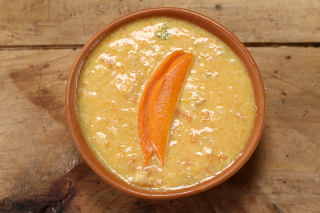
In a Punjabi home, phirni is quintessential and you don’t need a reason to enjoy it. We prepare the regular phirni all year long but when it’s summer, I enjoy this luscious, creamy and mango-flavoured version which is just ‘wow’! (See the recipe)
4. Cold Mango Souffle
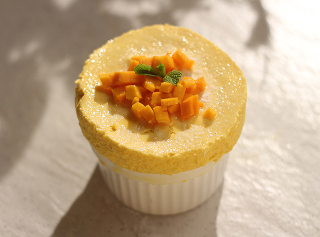
Cravings chilled things? This is the perfect recipe for this mango mausam. A French dessert made with sumptuous mangoes, it is not just unique, but also decadent. (see the recipe)
5. Mango Pani Puri

The ladies at my house are die-hard pani-puri lovers, so I experimented with fresh Alphonso mangoes and made this supremely delish version of pani puri. It not just includes a tangy pani with raw mangoes but a sweet mango surprise inside the puri. (See the recipe)
6. Mango Mint Raita

What better way to finish off your meal than a chilled raita with the fabulous combination of mangoes and mint? Dahi is a must with every meal for me, especially for lunch and I enjoy my share of this raita, almost every day, until the season lasts. Thoda khatta, thoda meetha aur bohot hi swadisht! (I little sour, a little sweet, and delicious!) (See the recipe)
Now, we can all agree that the love for mangoes is no ‘aam’ baat and there’s no reason you need to stop yourself from enjoying the mango season completely with these ultra-delicious recipes. You can check out more interesting recipes with mangoes at www.sanjeevkapoor.com or my YouTube channel, sanjeevkapoorkhazana.
